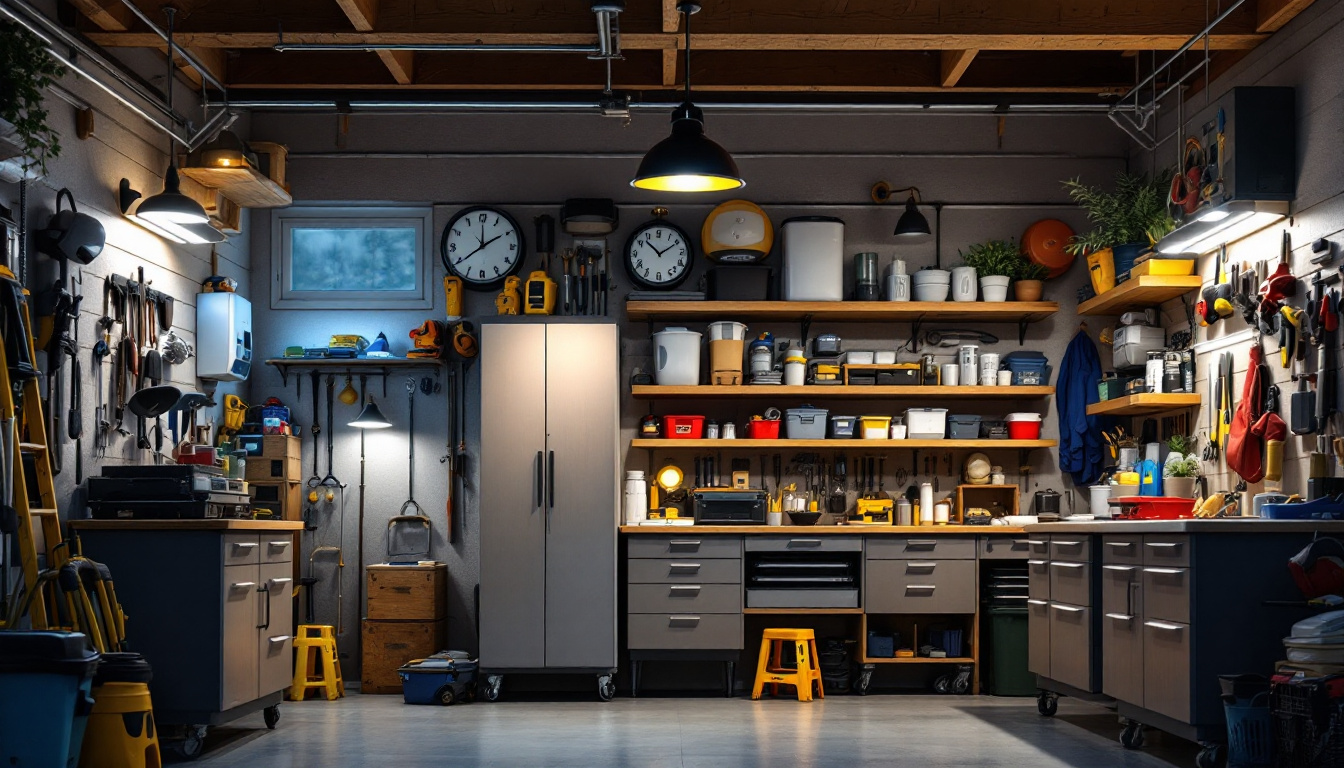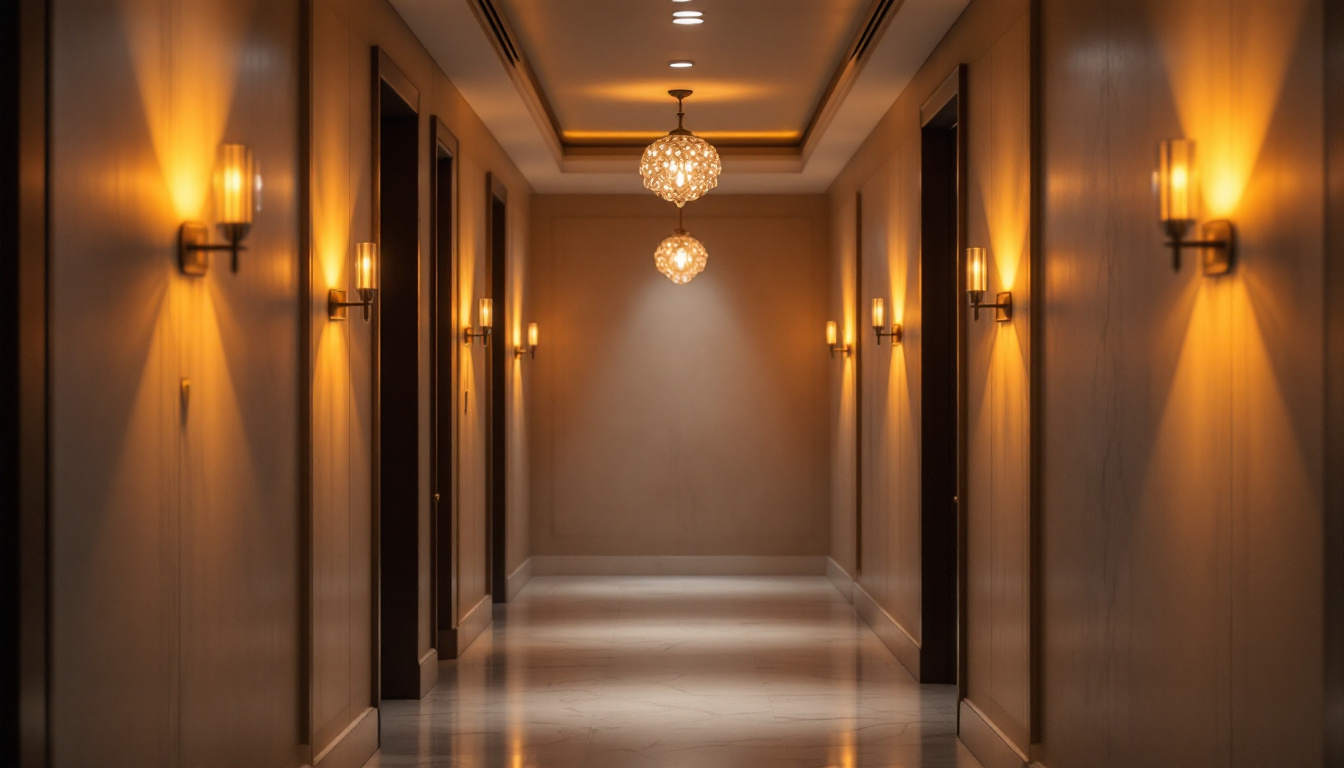
When it comes to residential garage lighting, the options are as diverse as the needs of homeowners. As a lighting contractor, understanding the various lighting solutions available can help you provide tailored recommendations that enhance both functionality and aesthetics. This guide will explore innovative lighting ideas, practical tips, and design considerations to elevate residential garage spaces.
Garage lighting serves multiple purposes beyond mere visibility. It plays a crucial role in safety, security, and usability. A well-lit garage can prevent accidents, deter intruders, and make it easier for homeowners to locate tools and equipment.
Moreover, the garage often acts as a multi-functional space—serving as a workshop, storage area, or even a gym. Therefore, the lighting design should accommodate these various uses while ensuring energy efficiency and ease of installation. The choice of lighting can also influence the overall mood of the space, making it more inviting for various activities, whether it’s a DIY project or a family gathering.
Safety is paramount in any garage setting. Poor lighting can lead to accidents, especially in areas where tools and machinery are frequently used. Installing bright, evenly distributed lighting can significantly reduce the risk of slips, trips, and falls. Furthermore, incorporating features like task lighting over workbenches can enhance precision during intricate tasks, ensuring that even the smallest details are visible.
In terms of security, well-lit garages deter potential intruders. Motion-sensor lights can be particularly effective, as they activate when movement is detected, alerting homeowners to any unusual activity. Additionally, integrating smart lighting systems that can be controlled remotely adds an extra layer of security, allowing homeowners to monitor and manage their garage lighting from anywhere, providing peace of mind even when they are away from home.
When planning garage lighting, it’s essential to balance functionality with aesthetics. Functional lighting focuses on providing adequate illumination for tasks, while aesthetic lighting enhances the overall ambiance. For example, using LED strip lights can add a modern touch to the garage while also providing necessary task lighting. These strips can be installed along shelves or under cabinets to illuminate work areas without overwhelming the space.
Consider the specific activities that will take place in the garage. For a workshop, bright overhead fixtures may be needed, while a garage doubling as a recreational space might benefit from softer, ambient lighting. Additionally, incorporating dimmable fixtures can allow homeowners to adjust the brightness based on the task at hand, whether it’s a detailed repair job or a casual game night with friends. This versatility not only enhances functionality but also allows for a personalized touch that reflects the homeowner’s style and needs.
There are several types of lighting options available for residential garages, each with its unique advantages. Understanding these options allows lighting contractors to make informed recommendations based on the homeowner’s needs and preferences.
Fluorescent lights are a popular choice for garages due to their energy efficiency and bright illumination. They provide a wide coverage area, making them ideal for larger spaces. Additionally, fluorescent fixtures are relatively easy to install and maintain, making them a practical option for homeowners.
However, it’s important to note that fluorescent lights can sometimes flicker and may not perform well in extremely cold temperatures. Therefore, it’s crucial to choose high-quality fixtures designed for garage use.
LED lighting has gained immense popularity in recent years, and for good reason. These lights are incredibly energy-efficient, have a long lifespan, and produce minimal heat. LED fixtures come in various styles, including recessed lights, strip lights, and panel lights, allowing for versatile design options.
Moreover, LEDs are available in different color temperatures, providing flexibility in creating the desired ambiance. For example, a cooler light can enhance visibility for detailed tasks, while warmer tones can create a more inviting atmosphere.
Task lighting is essential for specific activities within the garage, such as working on cars or completing DIY projects. This type of lighting focuses on providing concentrated illumination to a particular area, ensuring that homeowners can see clearly while performing detailed tasks.
Examples of task lighting include adjustable work lights, under-cabinet lights, and portable LED work lamps. These fixtures can be strategically placed to illuminate workbenches, tool areas, or any other spots where focused light is needed.
Designing an effective garage lighting plan involves several key considerations. From layout to fixture selection, each element plays a vital role in achieving a well-lit and functional space.
Layering light is a design technique that combines different types of lighting to create a balanced and versatile environment. In a garage, this can include ambient lighting for overall illumination, task lighting for specific areas, and accent lighting to highlight architectural features or decor.
By layering light, contractors can ensure that the garage is not only functional but also visually appealing. This approach allows for flexibility, enabling homeowners to adjust the lighting based on their activities or preferences.
The placement of fixtures is crucial for maximizing the effectiveness of garage lighting. Overhead lights should be positioned to minimize shadows and ensure even illumination across the entire space. In areas where detailed work is performed, task lights should be placed directly above or beside work surfaces.
Additionally, considering the height of the garage ceiling is essential. For garages with higher ceilings, using pendant lights or adjustable fixtures can help direct light where it’s needed most.
Choosing the right color temperature and brightness is vital for creating a comfortable and functional garage environment. Cooler color temperatures (around 4000K to 5000K) are ideal for task-oriented areas, as they mimic daylight and enhance visibility.
On the other hand, warmer temperatures (around 2700K to 3000K) can create a more inviting atmosphere, suitable for garages that serve as recreational spaces. It’s essential to discuss these options with homeowners to determine their preferences and needs.
As energy costs continue to rise, homeowners are increasingly interested in energy-efficient lighting solutions. Lighting contractors can play a significant role in promoting sustainable practices by recommending energy-efficient fixtures and technologies.
Smart lighting systems have revolutionized the way homeowners interact with their garage spaces. These systems allow users to control their lights remotely via smartphones or voice-activated devices. Features such as scheduling, dimming, and color changes enhance convenience and energy savings.
Incorporating smart lighting into garage designs not only improves functionality but also appeals to tech-savvy homeowners looking to modernize their spaces.
When selecting bulbs, opting for energy-efficient options such as LEDs or compact fluorescents can significantly reduce energy consumption. These bulbs use less electricity and have a longer lifespan compared to traditional incandescent bulbs, resulting in lower replacement costs and reduced environmental impact.
Educating homeowners about the benefits of energy-efficient bulbs can help them make informed decisions that align with their sustainability goals.
While functionality is critical, aesthetics should not be overlooked. Decorative lighting can add character and style to a garage, transforming it from a utilitarian space into an extension of the home.
Accent lighting can highlight specific features within the garage, such as shelving, artwork, or architectural details. This type of lighting adds depth and interest to the overall design, making the space more visually appealing.
Using LED strip lights or small spotlights can effectively create focal points and enhance the overall ambiance of the garage.
Choosing stylish fixtures can elevate the garage’s design. From industrial-style pendants to sleek flush mounts, the right lighting fixtures can complement the overall aesthetic of the home. Contractors should consider the homeowner’s design preferences when recommending fixtures to ensure a cohesive look.
Incorporating unique designs can also serve as conversation starters, making the garage a more inviting space for gatherings or family activities.
Proper installation and maintenance are crucial for ensuring the longevity and effectiveness of garage lighting. Lighting contractors should be well-versed in best practices to provide homeowners with reliable and efficient solutions.
During installation, it’s essential to follow local electrical codes and safety regulations. Ensuring that fixtures are securely mounted and that wiring is properly insulated will prevent hazards and ensure the longevity of the lighting system.
Additionally, contractors should consider the layout of the garage and the specific needs of the homeowner when determining fixture placement. A well-planned installation can significantly enhance the functionality of the space.
Regular maintenance is key to keeping garage lighting in optimal condition. Homeowners should be encouraged to clean fixtures periodically to remove dust and debris that can diminish brightness. Replacing burnt-out bulbs promptly will ensure consistent illumination.
Contractors can provide homeowners with a maintenance schedule and tips to help them keep their garage lighting functioning effectively over time.
Residential garage lighting is an essential aspect of creating a functional and inviting space. By understanding the various lighting options, design considerations, and practical tips, lighting contractors can provide homeowners with tailored solutions that meet their unique needs.
From enhancing safety and security to incorporating stylish fixtures and energy-efficient technologies, the possibilities for garage lighting are vast. By staying informed about the latest trends and innovations, contractors can elevate their services and help homeowners transform their garages into well-lit, multi-functional spaces.
Ready to take your residential garage lighting projects to the next level? At LumenWholesale, we provide lighting contractors with the highest quality, spec-grade lighting products at exceptional wholesale prices. Say goodbye to local distributor markups and hello to a vast selection of reliable lighting solutions that meet rigorous industry standards. With free shipping on bulk orders, you can stock up on everything you need to create functional, inviting, and energy-efficient garage spaces for your clients. Don’t settle for less—choose LumenWholesale for the perfect combination of quality, value, and convenience. Wholesale Lighting at the Best Value is just a click away.

Discover the top strategies lighting contractors use to choose the perfect LED bulb types for any project.

Discover the essential compliance guidelines for RGB LED lights that every lighting contractor should know.

Discover the ultimate guide to hall light fixtures, exploring styles, installation tips, and energy-efficient options to illuminate your space beautifully and effectively..

Discover the transformative power of 5000K LED lighting with our comprehensive guide tailored for lighting contractors.